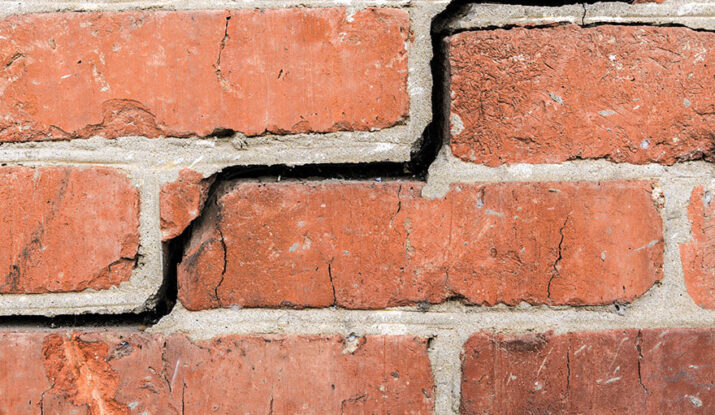Top 5 Warning Signs Your Brick Needs Repair in Toronto
Is your brickwork trying to tell you something? In Toronto’s harsh climate, even minor brick issues can escalate fast. At Fadom Masonry, we frequently encounter bricks showing early signs of trouble. Catching these warning signs early can save you time, money, and preserve your property’s structural integrity.
Introduction
Brick homes are durable—but they’re not indestructible. Everyday wear from Toronto’s freeze-thaw cycles, moisture, and aging mortar can slowly weaken brick structures. In this blog post, we’ll highlight the top 5 signs your brick needs repair. Spot them early and call in Fadom Masonry before small issues become major headaches.
1. Cracked or Crumbling Mortar
Mortar is the glue that binds bricks, and it deteriorates faster than the bricks themselves. As it cracks or falls out, bricks loosen and water can penetrate deeply.
Why Mortar Fails First
Toronto’s winter freeze-thaw cycles make mortar especially vulnerable. Coupled with age and water seepage, mortar often cracks, crumbles, or falls away.
How Fadom Masonry Tackles Repointing
We carefully remove damaged mortar and replace it using color-matched mortar. This restores structural strength and keeps your brickwork watertight, matching the building’s original aesthetic.
2. Spalling or Flaking Bricks
Spalling happens when water seeps into bricks and, as it freezes and thaws, causes the face to chip and peel away. This is especially common in southern Ontario winter months.
Freeze–Thaw Cycle Effects
Repeated expansion and contraction damages the brick surface. Left unchecked, it can lead to deeper structural issues.
Replacement Strategies
Fadom Masonry removes spalled bricks and replaces them with high-quality matching units. We also assess water drainage and sealing to prevent future damage.
3. Bulging or Bowing Walls
If your brick walls are curving outward, that’s a serious structural warning sign. Moisture pressure, foundation shifts, or rusting ties can all cause walls to bow.
Structural Pressure & Causes
Bulging is often driven by unseen internal stresses. It’s not a cosmetic flaw—it’s potentially dangerous.
Professional Fixes vs. DIY Risk
Never attempt to fix bulging walls yourself. Fadom Masonry will assess the root cause and may recommend rebuilding sections or adding structural bracing.
4. Efflorescence (White Powdery Stains)
That unsightly white powder on your bricks? It’s called efflorescence—salts left behind by evaporated water. Although harmless structurally, it’s a clear sign of moisture issues.
What Causes Efflorescence
Water entering brickwork dissolves soluble salts. As it evaporates, it leaves a chalky residue.
Cleaning and Prevention
Fadom Masonry uses safe cleaning techniques and addresses underlying moisture issues such as drainage, sealing, or gutter repairs to prevent recurrence.
5. Brick Discoloration or Staining
Dark, blotchy, green or mossy brick surfaces are often caused by mold, mildew, or mineral deposits. It usually results from poor ventilation or persistent moisture exposure.
Mold, Mildew & Mineral Deposits
Discoloration often happens in shaded or damp areas. Over time, it erodes mortar and bricks if left untreated.
Gentle Restoration Techniques
We recommend professional soft-cleaning methods—never power washing—that remove stains without damaging the bricks. We also fix leaks or poor airflow to prevent future staining.
Why Timely Brick Repair Matters in Toronto’s Climate
Toronto’s wet springs and frigid winters accelerate deterioration. Fixing issues early helps prevent water infiltration, freeze damage, mold, and expensive structural repairs later.
How Fadom Masonry Helps You Restore Your Brickwork
With years serving Toronto and the GTA, Fadom Masonry provides expert brick repair, tuckpointing, chimney repair, and restoration—specializing in older homes as well as modern builds. Our approach ensures safety, longevity, and aesthetic harmony.
How to Protect Your Brickwork Between Repairs
- Schedule inspections every spring and fall
- Keep gutters and downspouts clear
- Address minor cracks immediately
- Maintain proper sealing and drainage
Conclusion
In Toronto’s climate, brickwork doesn’t heal itself—and early signs of damage can quickly escalate into serious issues. Recognizing the warning signs—like cracked mortar, spalling, bulging walls, efflorescence, or staining—can save you from costly repairs later. At Fadom Masonry, we’re here to provide trusted, professional brick repair that restores strength and beauty.
Frequently Asked Questions (FAQs)
1. How often should brick mortar be repointed in Toronto?
For most homes, mortar should be inspected every 20–30 years or sooner if cracks appear. Early repointing prevents further damage.
2. Can I clean efflorescence myself safely?
Mild efflorescence can sometimes be cleaned with a stiff brush and water—but professional solutions ensure no damage and proper moisture mitigation.
3. Is brick discoloration just cosmetic?
Not always. It can indicate moisture or mold issues that may eventually degrade your brickwork or mortar.
4. How do I know if wall bulging is serious?
If walls are noticeably bowed or you see stepped cracks, that’s a serious structural red flag. Call a professional immediately.
5. Can I attempt spalling brick repair myself?
Small surface chips might seem manageable, but comprehensive spalling repair requires proper brick matching and sealing that professionals provide.
6. Does Toronto salt damage brickwork?
Yes—road salt splash near driveways or lower walls accelerates mortar deterioration and brick surface damage. Regular inspections help catch early signs.
7. What happens if I ignore minor brick cracks?
Minor cracks let moisture in, which expands and worsens with freeze cycles—leading to faster deterioration and potential structural issues.
8. Are sealed bricks maintenance-free?
Brick sealers help, but aren’t permanent. Maintenance is still required—check seals regularly and reseal as needed.

